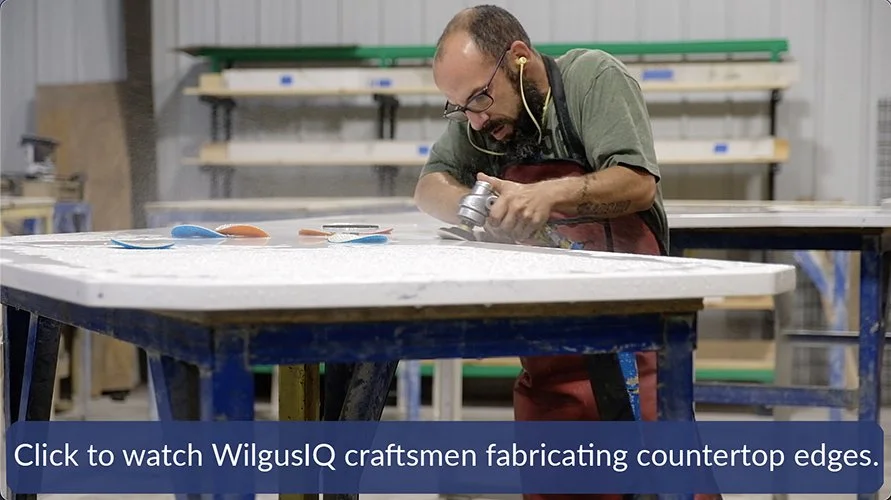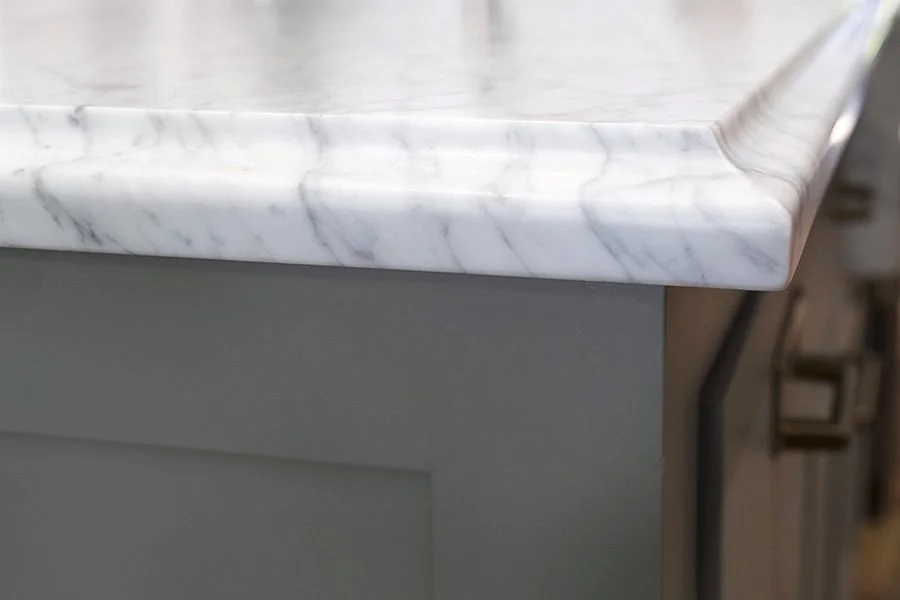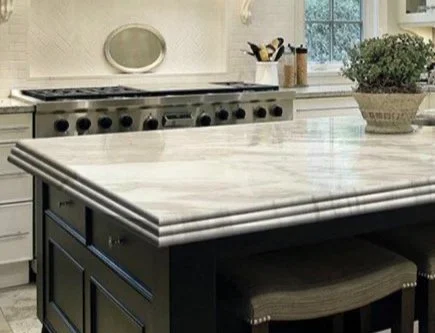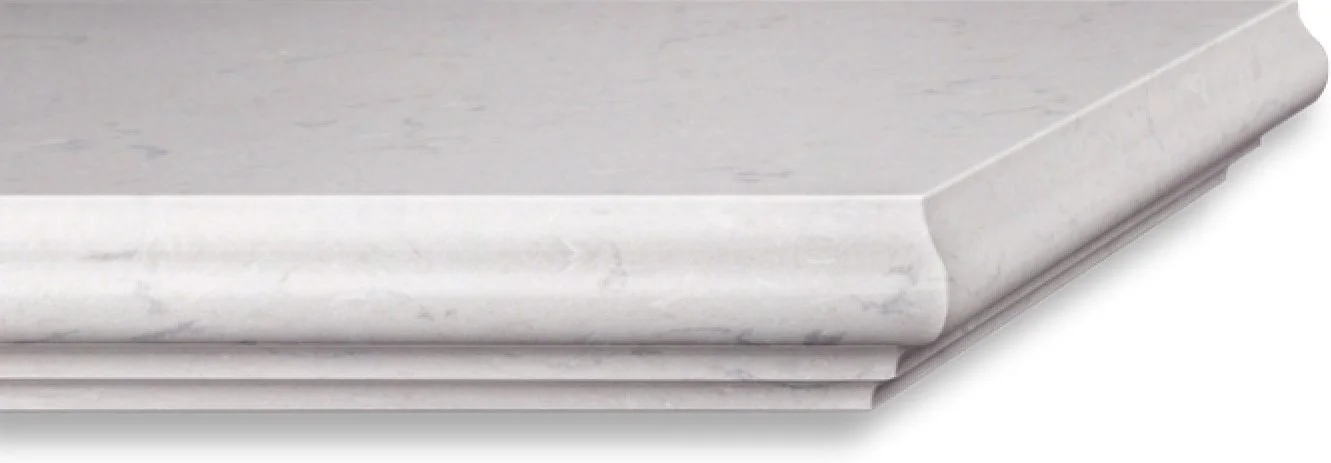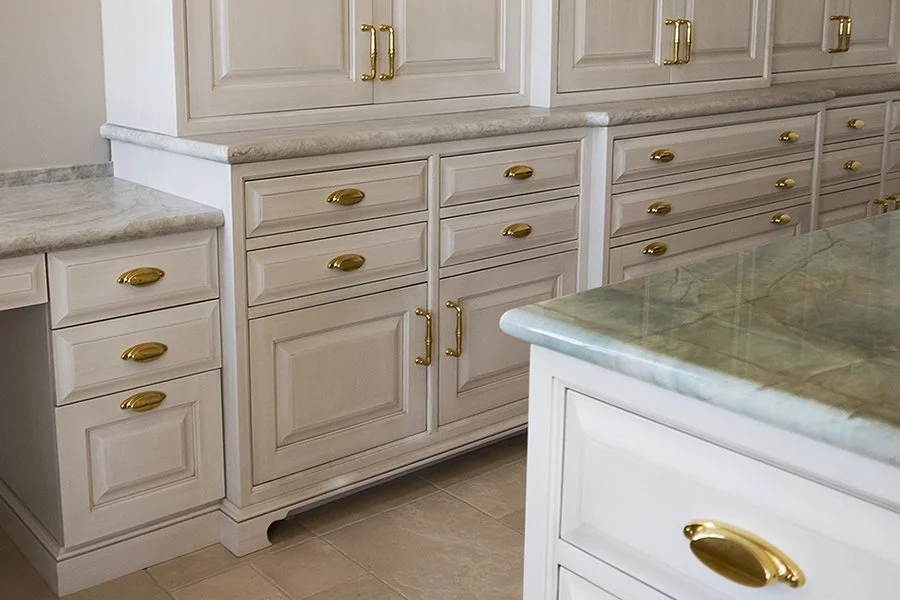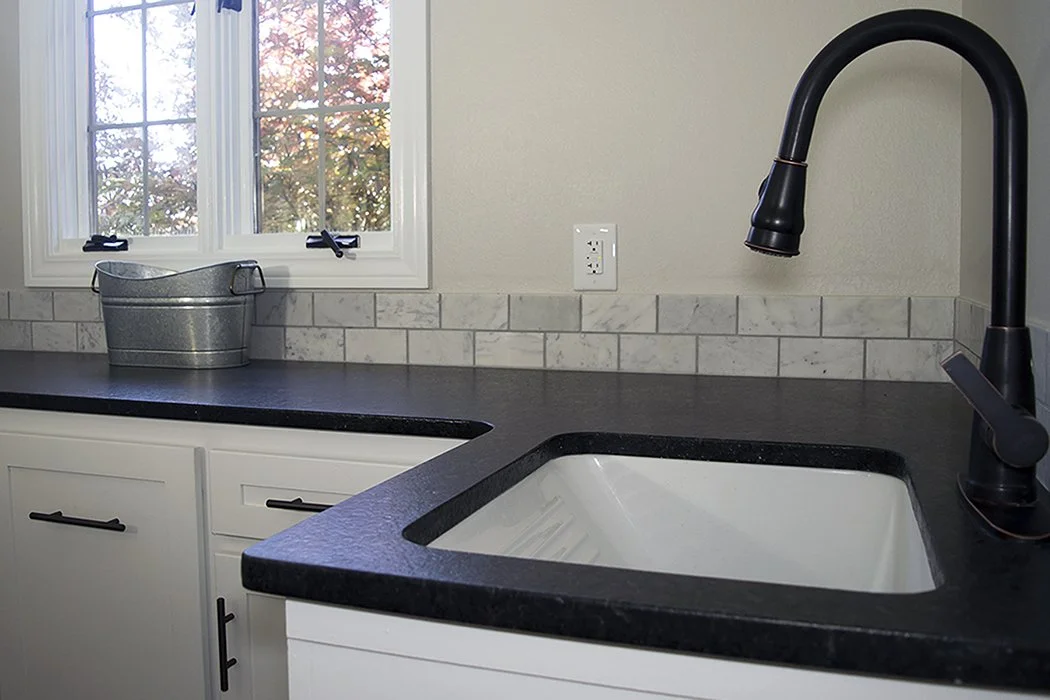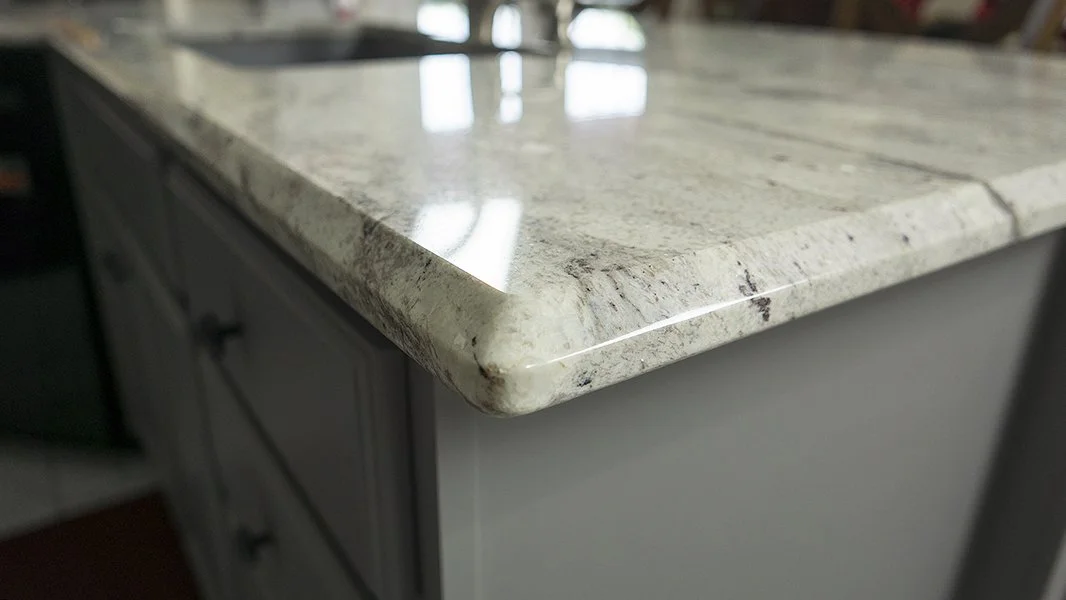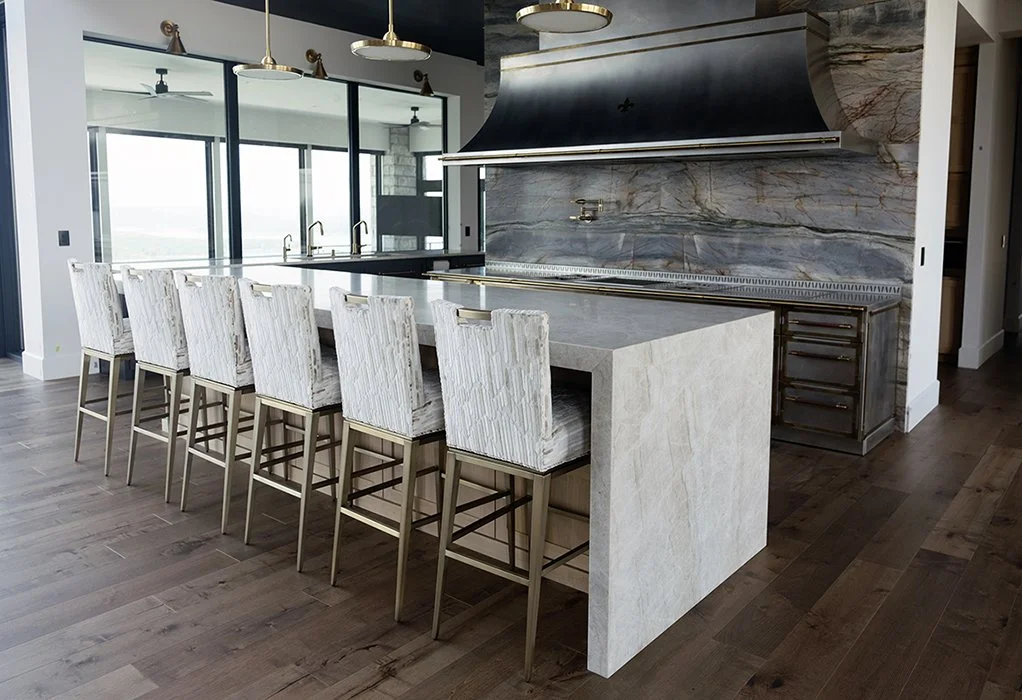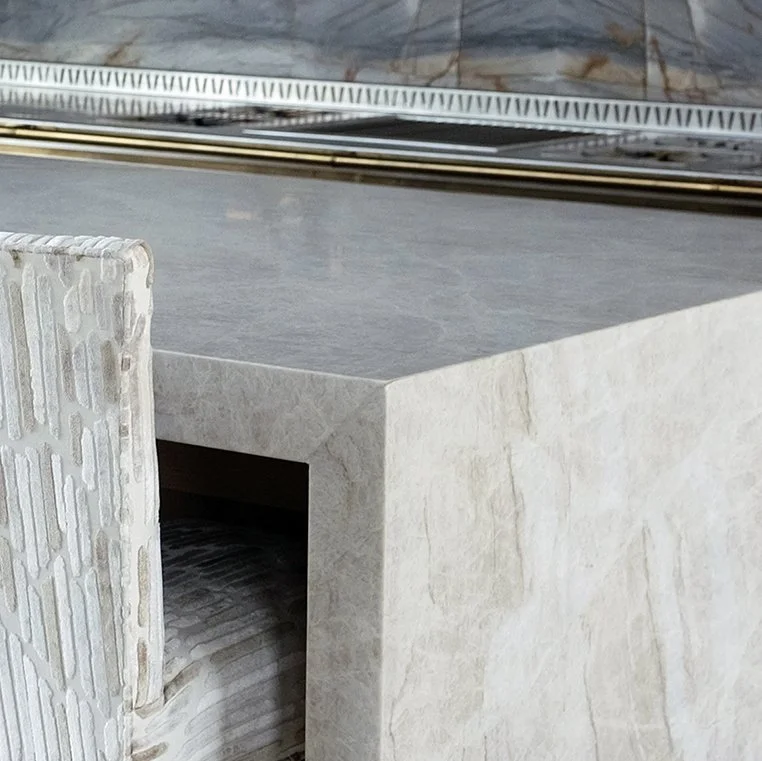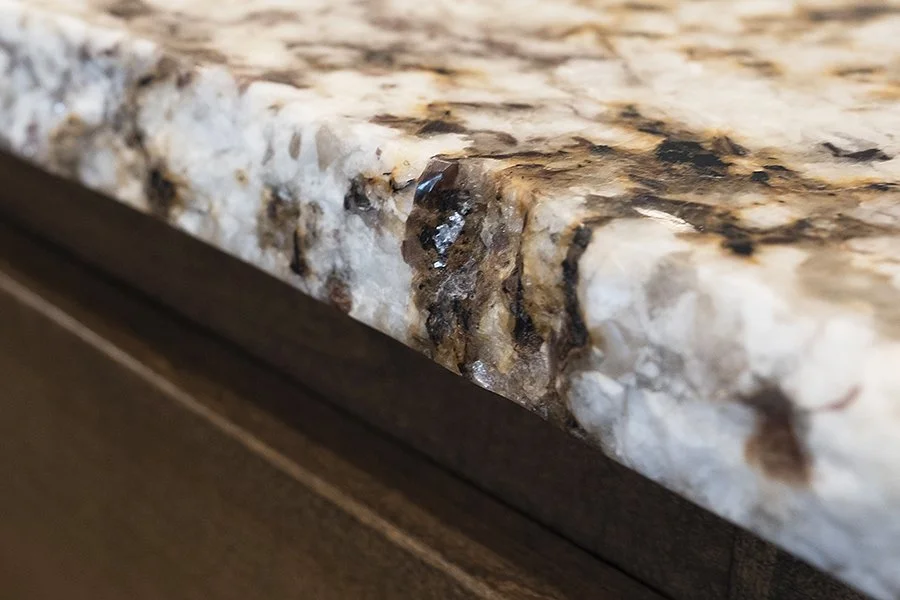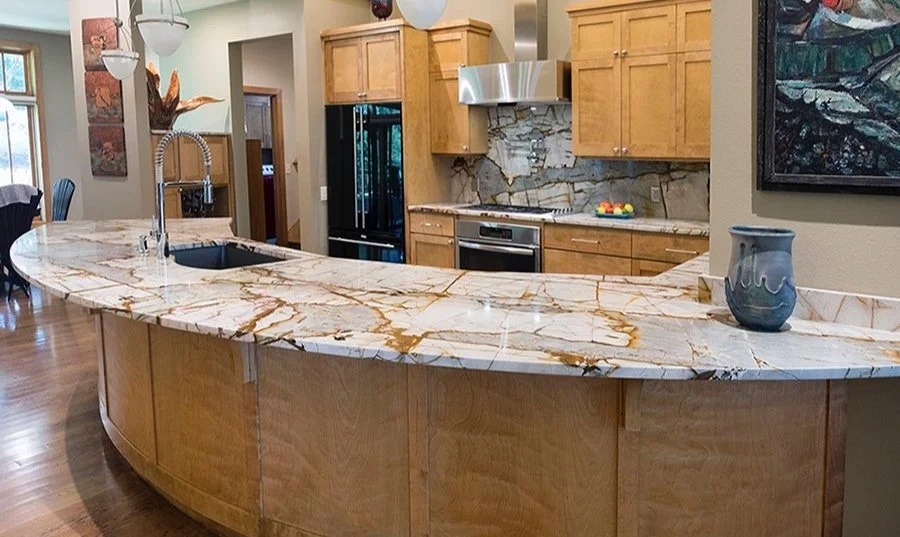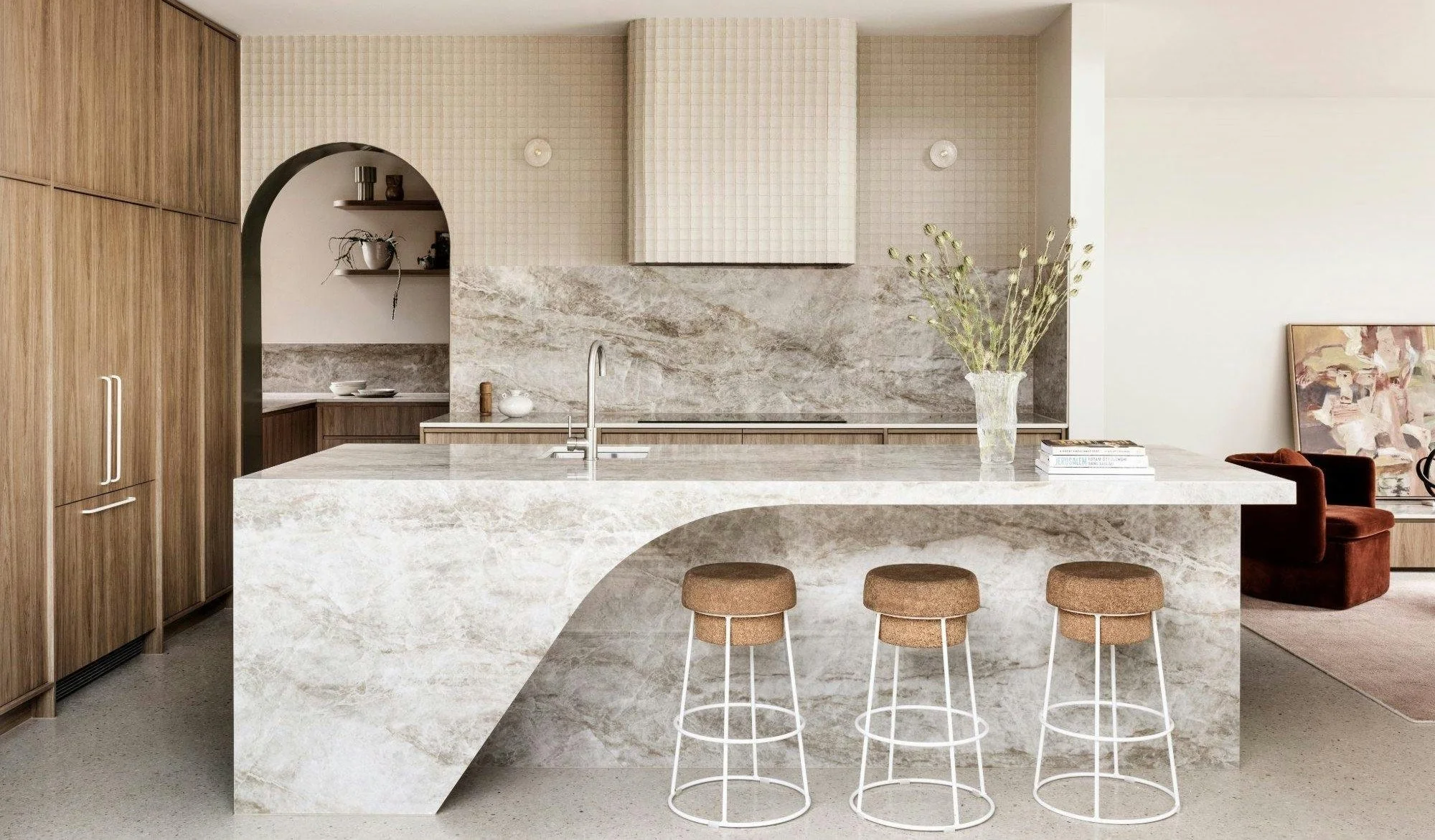Smooth Chiseled edge granite countertop by WilgusIQ.
WHETHER YOUR STYLE IS sleek and modern, traditional and cozy, bold and artistic or something entirely your own, there’s a custom countertop edge to match. In this article, we’ll answer the following questions about edges for granite, marble, quartzite, quartz, sintered stone, and porcelain countertops:
1. Why do I need to think about countertop edges?
2. How can you choose a countertop edge that matches your style?
3. What are some practical considerations when choosing a countertop edge?
Why do I need to think about countertop edges?
The countertop edge is an important detail that can either enrich your design or undermine it and make kitchen maintenance easier or more time-consuming. Depending on the capabilities of your countertop shop and the material you choose, you may have a hefty number of edge options to sort through. MSI’s website lists over 100 different edge profiles available! How can you choose one that matches your style?
How can you choose a countertop edge that matches your style?
Although there will always be a delightful overlap with design, we can group countertop edges into three basic styles:
• Traditional
Does your style feature classic lines, elegant patterns, rich materials? If so, a sculpted edge may suit your countertop and personality.
Not surprisingly, a sculpted edge is often combined with traditional and natural materials like marble, granite and quartzite. But with recent advances in engineered stone, quartz countertops can also flaunt an elegant contour. Here are some quartz edges from the Cambria website:
From clockwise, the images above show the Cambria Bryn, Mesa, Cornice and Cascade countertop edges. It should be noted that these and other edge styles sometimes go by different names depending on the company or fabricator, which is why this article uses descriptive names.
And if you’re thinking that the edges above look larger than a standard 3 cm countertop thickness, you’re right. Additional fabricated material has been glued to the bottom of the countertop perimeter for a fuller design, a standard technique with intricate edges.
Not all traditional edges are intricate, however. On the opposite end of the scale is the classic rounded edge:
Rounded marble countertop edges by WilgusIQ.
Soft and understated, this traditional style helps guard against chipping and is easy to clean.
• Modern
Perhaps you prefer clean lines and movement in your design. If so, you’re not alone. The modern look in countertops features squared edges with a slight rounding, or easing, at the corners. As is the case at WilgusIQ, the Eased edge often comes standard at no extra cost.
Eased edge granite countertop by WilgusIQ.
If you want a modern look with more dimension, a beveled edge may suit your style. The addition of angular surfaces in a beveled edge heighten the contrast between light and shadow, giving more depth to the design.
Beveled edge granite countertop by WilgusIQ.
And then there’s the edge that is no edge, the Waterfall. This is a vertical continuation of the countertop all the way to the floor, most often used on one or both sides of a free-standing island.
Quartzite Waterfall edge island by WilgusIQ.
While not new, Waterfall edges have become wildly popular in recent years along with the rise of showpiece stone like quartzite and designer quartz. Too beautiful to limit to horizontal countertops, these choice pieces of stone become part of a seamless work of art.
Mitered edge detail.
To heighten the effect, many Waterfall-edged islands and tops also feature a mitered edge. Once again, additional material is attached to the perimeter, but in this instance the adjoining edges are cut at a 45-degree angle to form a 90-degree angle.
The mitering is not exclusive to a modern look, but lends itself to all styles, including the next.
• Artistic
Would you like your countertops to make a statement? Is your style bold originality? The edge you choose can lift your countertops above the commonplace.
Smooth Chiseled granite edge by WilgusIQ.
For example, if you’ve chosen granite or quartzite because you love the authentic, natural feel and look, you might also want to consider a Chiseled edge. While it may sound jagged, the edge can actually be polished so that it is smooth to the touch.
If you’re looking for a bold color combination, consider the possibilities of Laminate edges.
Laminate granite edge from WilgusIQ.
We’ve discussed adding material to the countertop edge already, but as the Laminate edge above illustrates, your creativity is not limited to using just one material for both top and edge. Neither is it limited to standard shapes, as the two examples below demonstrate.
The top image features a semi-circular quartzite peninsula by WilgusIQ; below is a curved waterfall cove made of Dekton sintered stone. Both are the centerpiece of the room and stamp it as unique.
We’ve let our imaginations run free while discussing countertop edge styles, but before you choose it would also be good to discuss a few practical considerations.
What are some practical considerations when choosing a countertop edge?
• Cost
If you are working within a budget (and aren’t we all?), the cost of extra material for a Waterfall, Laminate or similar edge must be factored in. Intricate sculpted edges will cost more because they are labor intensive and may require special tools. Extra-hard materials like quartzite may require extra labor and specialized tools.
• Cleaning
Ornate edges with crevices may be more difficult to clean and require extra time.
• Chipping
Keep in mind that the edge is the most vulnerable part of the countertop when it comes to chipping, and that some materials are more resistant to chipping than others. If chipping is a concern, an Eased edge or a semi- or fully-rounded edge is considered the most chip-resistant. For individual materials, see our “About” pages for granite, marble, quartzite, quartz, sintered stone, and porcelain.
• Engineered Stone and Porcelain Edges
Engineered stone like quartz and sintered stone (also known as ultra-compact) continue to innovate, and most engineered stone and porcelain brands now feature at least some material with full-body color. But if the color is limited to the veneer, edging options will be limited. It is highly recommended to discuss edge options with your countertop shop before choosing an engineered stone or porcelain slab.
Whatever material and style you choose, there is a countertop edge to match and complement it. We invite you to continue to browse our free countertop resources to find your perfect match!


